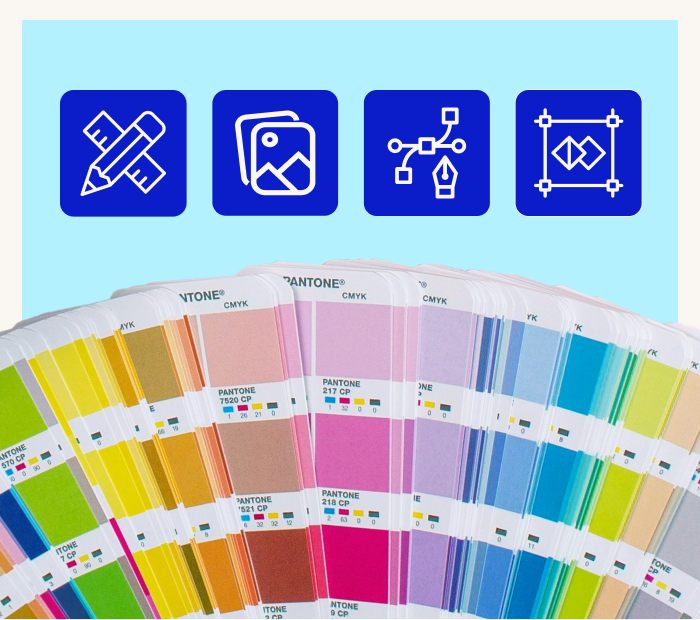
1. Responsive web design and mobile optimisation
Responsive web design and mobile optimisation are important for website design. They are necessary because people use mobile devices a lot and have different expectations. It is also essential for user experience and search engine optimisation (SEO).
Websites need to work well on other devices. Responsive design is good because it is consistent, cost-effective, and future-proof. It also helps with accessibility and reaching a global audience. Search engines favour mobile-friendly websites, which helps with search rankings.
2. Minimalistic and clean design aesthetics
This trend is popular because it improves user experiences. It reduces clutter and distractions, making pages load faster and easier to read. It works well on mobile devices and different screen sizes.
Focusing on content and removing unnecessary features and design elements highlights important messages and looks visually appealing. It’s also accessible and can adapt to different needs. This trend is efficient and meets user expectations and the evolving landscape of digital space.
3. Dark mode and colour schemes
Dark mode and colour schemes are a popular trend in website design. They offer a visually pleasing alternative to light backgrounds and help reduce eye strain. Users can customise their experience by toggling between light and dark themes. Unique and vibrant colour schemes help websites stand out and stimulate specific emotions or brand personalities. This trend showcases the desire for innovation in web design and offers practical benefits and aesthetic appeal to users.
4. Microinteractions and animations
Microinteractions and animation techniques enhance user engagement and interactivity, creating a more immersive digital experience. These design elements add life and dynamism to web interfaces. Microinteractions are subtle details like button animations or feedback cues that provide immediate visual or auditory responses.
Animations can guide users, convey information, and create a sense of flow for seamless navigation. Thoughtful use of these interactive elements can also communicate brand personality and style.
5. Voice user interface and chatbots
VUIs and chatbots make it easy for visitors to engage with websites in a user-friendly way. VUIs allow users to use voice commands to navigate and interact with website content. This helps people with disabilities and gives everyone a hands-free browsing experience, especially on mobile devices and smart speakers. Chatbots, powered by AI, provide instant and personalised assistance. They improve user engagement and quickly answer questions. These trends show that conversational interfaces are important in web design.
6. Artificial intelligence and machine learning in web design
Artificial intelligence and machine learning use advanced technology to improve websites’ usability. AI and machine learning analyse user behaviour and data patterns. This helps websites personalise content in real time. People want websites that understand and meet their needs. AI and machine learning can do this by recommending products, optimising content layout, and automating customer support. These technologies help businesses make better web strategies and stay competitive.
7. Progressive web apps and offline functionality
Progressive web apps (PWAs) and offline functionality improve user experiences by combining the benefits of websites and mobile applications. PWAs let users access websites through browsers but provide app-like experiences with fast load times, smooth navigation, and offline access.
PWAs allow users to engage with content even with limited or no internet connection, which is especially valuable in areas with unreliable connectivity. This trend improves accessibility, user retention, and engagement, making it a great choice for designers and businesses aiming to provide exceptional web experiences that adapt to diverse connectivity conditions.
8. Data visualisation and infographics
Presenting information visually appealing and easily comprehensible is crucial. Data visualisation techniques, such as interactive charts, graphs, and other custom illustrations, help users understand complex data sets quickly. This trend aids in storytelling and making data-driven content more engaging and understandable for users.
What are the benefits of following web design trends?
Following web design trends offers several benefits for web designers, developers, businesses, and website visitors. Here are some key benefits of being updated with these web design trends:
Enhanced User Experience
Customer preferences and behaviours drive web design trends. Designers follow trends to create intuitive, easy-to-navigate, visually appealing websites. This improves the user experience, increasing the chances of visitors staying, engaging, and taking desired actions. Keeping up with design trends improves user experiences by reflecting their preferences and providing an enjoyable browsing experience.
Better SEO Performance
Web design trends align with SEO practices and play a vital role in improving a website’s search engine rankings. For example, faster loading times, mobile optimisation, and responsive design are crucial for SEO in website design. Google prioritises positive user experiences, which can lead to higher search rankings.
Content Presentation
Trends affect how content is presented, making it more engaging and easier to understand. This improves content discoverability and comprehension.
Relevant and Engaging Brand Image
Outdated websites or those needing more contemporary design elements can create a negative perception of the brand. A website that aligns with current trends can leave a positive impression, highlighting the brand as innovative, up-to-date, and professional.
Accessibility
Modern design trends consider accessibility, such as improved colour contrast. This makes your website inclusive and easy to access for people with disabilities.
Elevate Your Digital Presence With Butterfly's Web Design Trends
Don’t miss the opportunity to join the digital revolution with Butterfly’s extensive experience and dedication to web design excellence, including hosting and support. As the leading website development agency in Melbourne, you’re ensuring a visually appealing and user-friendly website and positioning your brand as forward-thinking and customer-centric. Contact Butterfly’s web design agency today and bring your vision to life!




